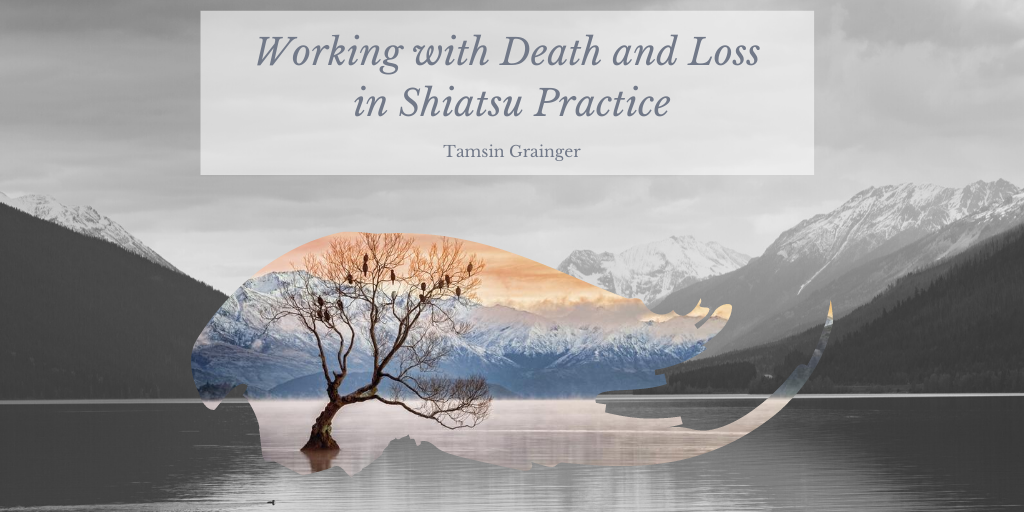Tamsin Grainger has been a Zen Shiatsu practitioner since 1991 and is the co-founder of The Shiatsu School in Edinburgh, as well as being a prolific writer and teacher. Below, she gives a glimpse of what readers can expect from her new book, Working with Death and Loss in Shiatsu Practice.
Introduction
Working with Death and Loss in Shiatsu Practice is a guide to bodywork in palliative care. It looks at how Shiatsu practitioners sit with their clients when they are grieving, how they listen to the bereaved, what language they use at the end of life, and above all their touch.
Because Shiatsu practitioners can address and hold the physical, emotional, mental and spiritual aspects of clients at the same time, as a result of their deep training based on hands-on experience, they are supremely placed to practice in this arena. My book looks at all these levels and provides support for the practitioner who wants to be centred, open-hearted and well primed.
The book contains a wide range of useful and illuminating theory which has been collected together in one volume for the first time. It covers the dying process and the ideas which underly Shiatsu practice as it pertains to loss and palliative care. It looks at the traditional ideas as well as at current teaching, and supports and encourages each individual to find their own confidence.
Knowing what Ki is
Shiatsu practitioners are taught that Ki pervades everything, that everything is made of Ki. Though invisible in its purest form to most human eyes, it may be felt by clients and practitioners alike. Everyone sees the result of it, though they may not describe the origin of what they see in the same way that Shiatsu practitioners do. They see someone with tears in their eyes and a down-turned mouth and deduce from ‘a feeling’, that that person is sad. To a Shiatsu practitioner, sadness is a particular configuration and result of Ki, and is subtly different from other emotional states, each of which has variations which those who sense the Ki can identify.
How is the Ki expressing itself in different states?
If someone is hopeful it is recognised by their breathing – an inhalation followed by more in breaths; by the direction of the Ki – it lifts and opens, moves forwards; by the location of the Ki – in the chest, or the region of the Crown Chakra; by its speed – gentle; and by its overall state – brightening. If, on the other hand, the client is actively angry (perhaps about their increasing frailty or the care offered to their loved one), the breath will be different – staccato, short, pushed outwards. The direction of the Ki too – broadcast out; the location more in the throat, eyes, hands and / or head; it would be moving suddenly, with immediacy; and overall there might be a quality of roaring.
This is what bodyworkers are tuned into, and it is this ability to stay centred while the information is absorbed, which makes Shiatsu so good in a hospice, hospital or with someone who is close to death. Holistic observations of this kind happen at the same time as saying ‘hello’ and listening to how the client is – a skill that other care workers have not learned. Once this multi-layered diagnosis has taken place, the practitioner knows how to touch to address the physical or emotional pain, mental anxiety, or spiritual distress which the client is going through.
There is a great deal more for you to explore in this book and we hope you enjoy reading it.
 Working with Death and Loss in Shiatsu Practice
Working with Death and Loss in Shiatsu Practice
A Guide to Holistic Bodywork in Palliative Care
Tamsin Grainger. Foreword by Richard Reoch
This book examines death and loss within Chinese medicine and related Taoist models, offering practical advice for working with frail or dying clients. It considers the different ways that practitioners may encounter death and includes appropriate exercises and meditations, as well as a model for teaching.
